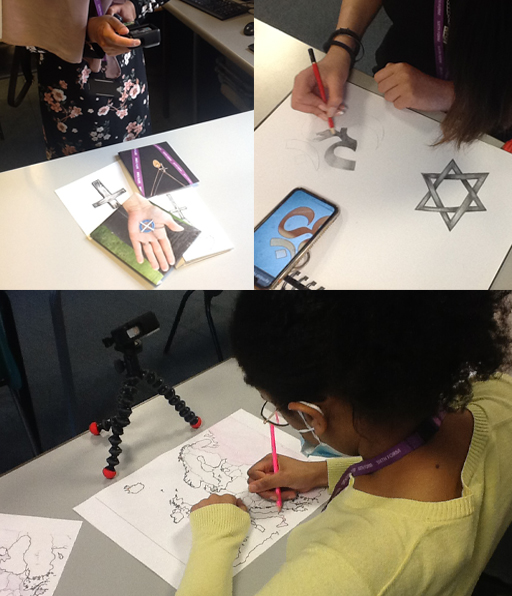4.1 Ingredients of a docutube: who, what and where
As one of the RETOPEA project team said in Video 1, the docutube planning phase is about translating young peoples’ ideas into a visual format. To do this, it might be helpful ask your young people to think about the ‘who’, ‘what’ and ‘where’ of their film.
Who will be in the film?
Think back to the expository, participatory and performative types of documentaries. Will there only be a voiceover or will the young people also participate in the film? Do they want to interview other people? Remember that not everyone in a group needs to ‘star’ in the docutube – you may well find that some would prefer only to be involved on the technical/practical side, e.g. using the camera.
What will you shoot?
If the young people are planning to interview other people, they will need to decide who and how many. The film talked about using props – an example which you saw was the map of Leuven. There are all kinds of different props you might use in a docutube. Be creative! Here are some examples of props that have been used in docutubes:
- a quote from a RETOPEA clipping written on a whiteboard
- a close-up image of a RETOPEA clipping
- artwork, photographs or animation by members of the group
- a historic costume for a young person to wear
- sticky notes with key words.
The vlog style – speaking directly to the camera in a diary style – which your young people will be very familiar with from platforms such as YouTube – can be effective and convenient, though limited. If this style is chosen, it will probably need to be mixed with other footage – images from the clippings, on-location shooting in TV News style, or other visual tricks such as using drawings or text.
Where will you shoot?
It might be that the docutube lends itself to being filmed in a classroom. However, you might want to shoot in a particular place that is relevant to the message of the film, perhaps elsewhere on the school property or even ‘on location’ – for example, in a place of worship, a museum, or at a historic site.
It is important to mention that the who, what and where ingredients of a docutube each have ethical implications. You will think through these ethical issues in more detail in the Create session (Session 3).
IN PRACTICE: Getting your group to pitch their film
As you saw in Video 1, it can really focus the minds of the young people if they know they will be ‘pitching’ their film to either their teacher or peers (or both). Give your group a definite time when they will need to be ready to do this. The response to the pitch should be both encouraging and constructively critical. You can give your groups a chance to go back, if necessary, and refine their plans.
You might want to ask the groups questions like?
- What is your key message?
- Who, where and what are you filming?
- What roles will the different people in your group have?
- Have you thought about safety, ethics and copyright (see Session 3)?

